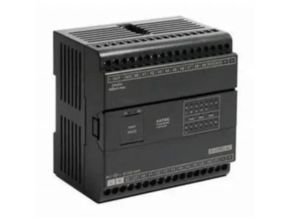Solinst Model 9200 RRL Remote Radio Link Telemetry offers a very simple, inexpensive method of local telemetry. The wireless system is designed to log real-time data from the Levelogger Series of data loggers. It communicates over distances up to 20 miles (30 km). Distances can also be increased by using some radios as repeaters.

Each remote station is programmed and scheduled using the same intuitive software as the STS Gold Telemetry Systems. Data is stored in an Access Database and can be exported for use in other programs, allowing self-management of the data. The RRL is excellent for small, closed-loop networks, such as mine sites and landfill
About Solinst Model 9200 RRL Remote Radio Link Telemetry
The Solinst RRL System offers a very simple and inexpensive method of local telemetry. Data is sent from the field via short-distance radio to your Home Station PC. The RRL is excellent for small, closed-loop networks such as mine sites, golf courses, and landfill monitoring networks. By using free unlicensed radio bands (ISM), the RRL has the advantage of being lower cost than cellular telemetry systems.
Solinst Model 9200 RRL Remote Radio Link Telemetry System Stations
RRL Stations work with an omnidirectional antenna and line-of-sight transmission, therefore, they can communicate over distances up to 20 miles (30 km). Optional antennas and using some stations as repeaters can maximize distances.
RRL Stations use a 900 MHz radio module. They use six replaceable lithium batteries and also have the option of a backup power source. Up to four Solinst dataloggers can be connected to one RRL (using two Splitters). The RS232 connection on each RRL is used for diagnostic, firmware updates, and programming purposes.
All RRL Stations use the same hardware and are programmed using a wizard in Solinst Telemetry Software as a Home Station, Remote Station, or Relay Station (repeater).
RRL Stations are interchangeable as required. RRL Stations have a non-volatile internal memory, and they store collected data until the Home Station has been successfully contacted.
RRL Telemetry Operation
Systems operate on two basic schedules. A sample rate is set, at which an RRL records a real-time reading from each attached datalogger. A report rate is the frequency that the data is sent from an RRL to the Home Station PC. Optionally, dataloggers can be set up to record and store data independently of the RRL.
Reported data is saved in a dynamically updated database on the Home Station PC, and can also be viewed and exported using Solinst Telemetry Software. You have complete control of your data.
Remote Radio Link Specifications
| Communication: | 900 MHz radio |
| Antenna: | 6″ (15 cm) half wave, (2.1dBi) non-articulating |
| Data File Type: | .mdb (database), .xle or .csv (exported) |
| Sampling Interval: | 10 seconds – 99 hours |
| Reporting Interval: | 1 minute – 99 hours |
| Schedule Programming: | Solinst Telemetry Software at Home Station |
| Power Supply: | 6 3.6V AA replaceable lithium batteries |
| Battery Life Example: | 680 days based on hourly sampling and reporting twice a day (1 Watt setting) |
| Memory Capacity: (Between Reports) | 128 KB (13,000 LT or 10,000 LTC readings) |
| Operating Temperature: | -20ºC to 50ºC |
| Size: | Fits in a 4.5″ diameter well |
| IP Rating: | IP66 (dust and waterproof, can not be submerged) |
| Compatible Dataloggers: | Levelogger Edge, Barologger Edge, Levelogger Junior Edge, LTC Levelogger Edge, Rainlogger Edge, LevelVent, and AquaVent, as well as Levelogger Gold, Barologger Gold, Levelogger Junior, LTC Levelogger Junior and Rainlogger |
| Number of Connected dataloggers: | 4 |
| Barometric Compensation: | Automatically performed in Solinst Telemetry Software or by the user in an external database |
Source: www.solinst.com
Read More:
- Adalit L-3000 Power Torch
- ACR Artex ResQLink View Buoyant Personal Locator Beacon with Digital Display
- King Pigeon S270 GSM 3G 4G M2M RTU Datalogger
- Macnaught Remote Mount Digital Displays & Controllers
- Macnaught Type ERB-PM Digital Display Flow Meter




